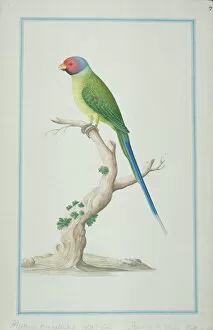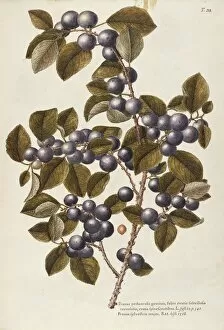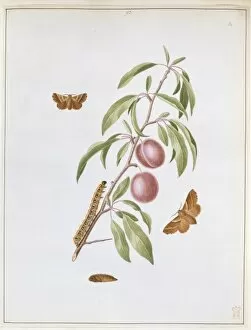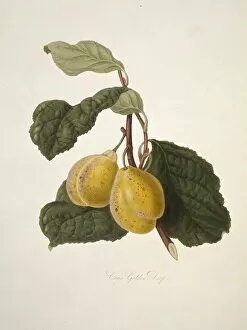European Plum Collection
The European plum, scientifically known as Prunus domestica Bailey, is a captivating small tree native to Europe and Caucasus
All Professionally Made to Order for Quick Shipping
The European plum, scientifically known as Prunus domestica Bailey, is a captivating small tree native to Europe and Caucasus. With its delicate watercolor representation dating back to 1770-1785, this fruit-bearing beauty has been admired for centuries. Belonging to the Rosaceae family, the European plum stands out with its vibrant hues and succulent taste. Its luscious fruits are often mistaken for peaches due to their similarity in appearance. However, it is important to note that they are distinct varieties within the Prunus sp. Family. One particular species of parakeet called Psittacula cyanocephala or the plum-headed parakeet finds solace amidst these trees' branches. The colorful bird's feathers harmonize perfectly with the rich colors of both plums and leaves. Insects such as Malacosoma castrense, also known as the plum lackey moth, find refuge in these trees too. Their presence adds an element of biodiversity to this already enchanting ecosystem. Not only do humans appreciate the European plum's aesthetic appeal but so do other avian creatures like Passerina ciris (painted bunting) and Ammodramus henslowii (Henslows sparrow). These birds are drawn towards its sweet nectar-filled blossoms and contribute to pollination while enjoying nature's bounty. Historically significant artworks like "Insects of Surinam" have captured the essence of this magnificent fruit alongside other natural wonders found in Suriname's tropical rainforests. Let us not forget about another member of its own family - Prunus domestica - commonly referred to simply as "plum. " This versatile fruit can be enjoyed fresh off the tree or transformed into delectable jams, jellies, pies, or even wine. Whether you're admiring a painting from centuries ago or savoring a juicy bite today, the European plum continues to captivate with its beauty and flavor.
















